Traffic-Induced Vibration Monitoring Using Laser Vibrometry: Preliminary Experiments
Abstract
1. Introduction
2. Materials and Methods
3. Results and Discussion
3.1. Signal Feature Exploration
3.2. Signal Classification Scheme
4. Conclusions
Author Contributions
Funding
Data Availability Statement
Conflicts of Interest
References
- Unsignalized Intersection Crashes. Available online: https://safety.fhwa.dot.gov/intersection/about (accessed on 20 May 2022).
- Intersection Safety: A Manual for Local Rural Road Owners. Available online: https://safety.fhwa.dot.gov/local_rural/training/fhwasa1108/fhwasa1108.pdf (accessed on 20 May 2022).
- Li, Y.; Ibanez-Guzman, J. Lidar for autonomous driving: The principles, challenges, and trends for automotive lidar and perception systems. IEEE Signal Process. Mag. 2021, 37, 50–61. [Google Scholar] [CrossRef]
- Hayashi, S.; Saho, K.; Isobe, D.; Masugi, M. Pedestrian detection in blind area and motion classification based on rush-out risk using micro-doppler radar. Sensors 2021, 21, 3388. [Google Scholar] [CrossRef] [PubMed]
- Hostettler, R. Traffic counting using measurements of road surface vibrations. M.Sc. Thesis, Luleå University of Technology, Luleå, Seweden, 2009. [Google Scholar]
- Ye, Z.; Wang, L.; Xu, W.; Gao, Z.; Yan, G. Monitoring traffic information with a developed acceleration sensing node. Sensors 2017, 17, 2817–2833. [Google Scholar] [CrossRef] [PubMed]
- Ma, W.; Xing, D.; McKee, A.; Bajwa, R.; Flores, C.; Fuller, B.; Varaiya, P. A wireless accelerometer-based automatic vehicle classification prototype system. IEEE Trans. Intell. Transp. Syst. 2013, 15, 104–111. [Google Scholar] [CrossRef]
- Ling, S.; Yu, F.; Sun, D.; Sun, G.; Xu, L. A comprehensive review of tire-pavement noise: Generation mechanism, measurement methods, and quiet asphalt pavement. J. Clean. Prod. 2021, 287, 125056. [Google Scholar] [CrossRef]
- Ismail, M.A.A.; Mahmod, M.; Rembe, C. Verfahren und Vorrichtung zur Verkehrsüberwachung Mittels Fahrbahnschwingungen und Laservibrometrie. Deutsche Patent DE102020124526, 21 September 2020. [Google Scholar]
- Castellini, P.; Martarelli, M.; Tomasini, E.P. Laser Doppler Vibrometry: Development of advanced solutions answering to technology’s needs. Mech. Syst. Signal Process. 2002, 20, 1265–1285. [Google Scholar] [CrossRef]
- QTec®—Reinventing Vibrometry. Available online: https://www.polytec.com/eu/vibrometry/technology/qtec (accessed on 10 February 2022).
- Sun, L.; Kennedy, T.W. Spectral analysis and parametric study of stochastic pavement loads. J. Eng. Mech. 2002, 128, 318–327. [Google Scholar] [CrossRef]
- Wu, B.; Saxena, A.; Khawaja, T.S.; Patrick, R.; Vachtsevanos, G.; Sparis, P. An approach to fault diagnosis of helicopter planetary gears. In Proceedings of the AUTOTESTCON, San Antonio, TX, USA, 20–23 September 2004; pp. 475–481. [Google Scholar]
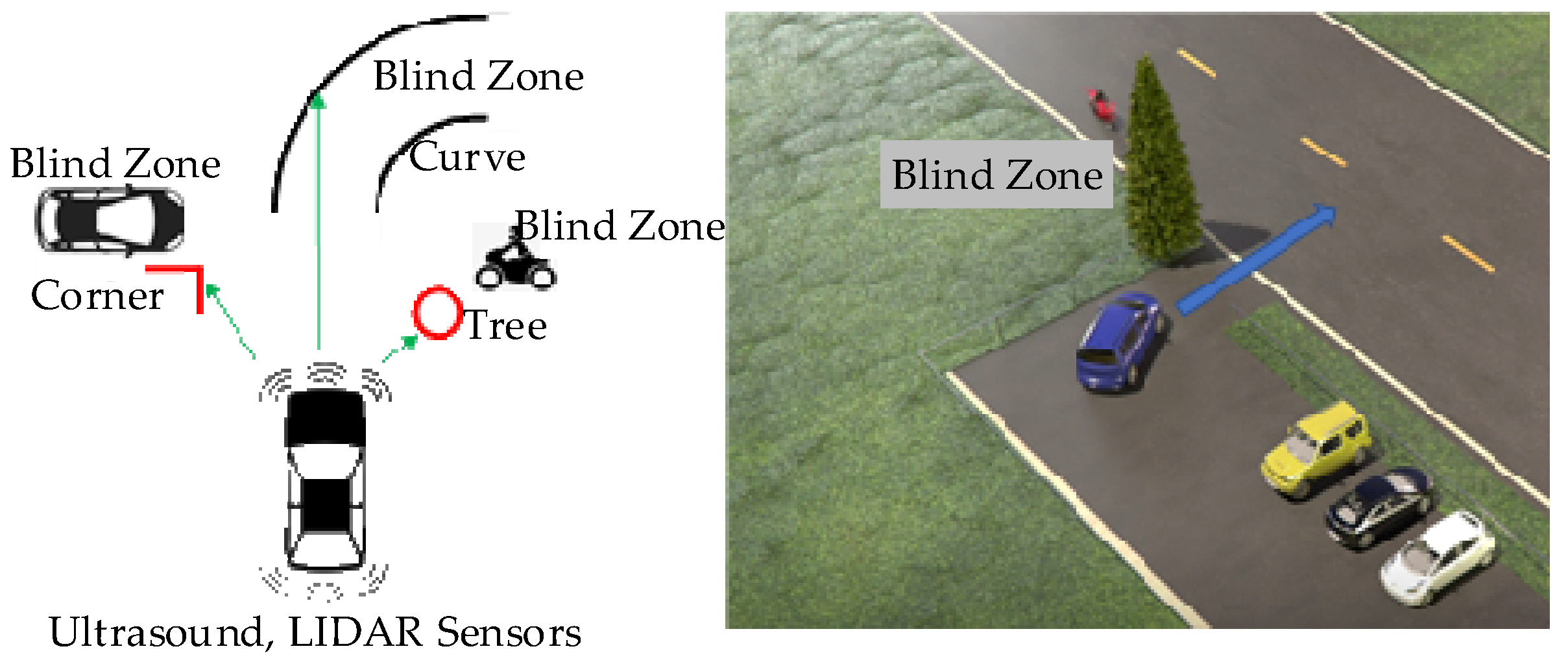

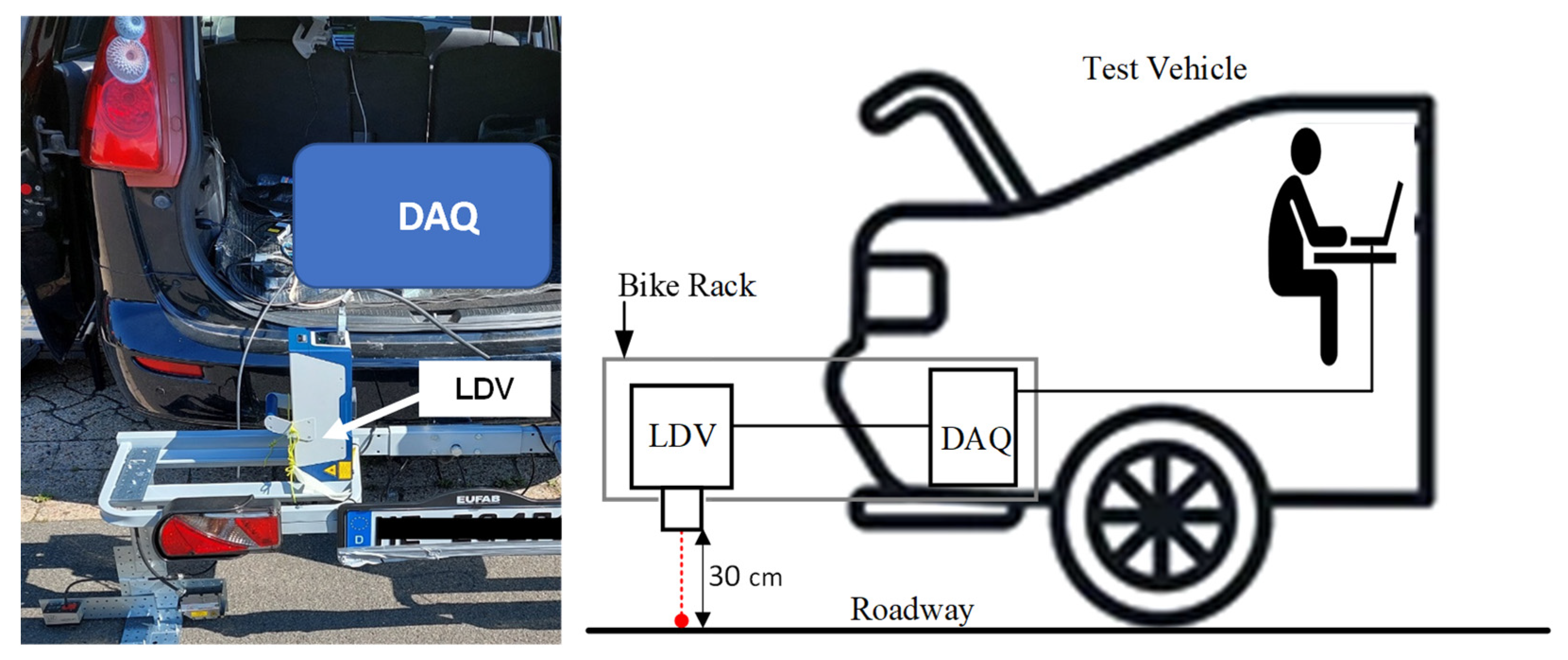
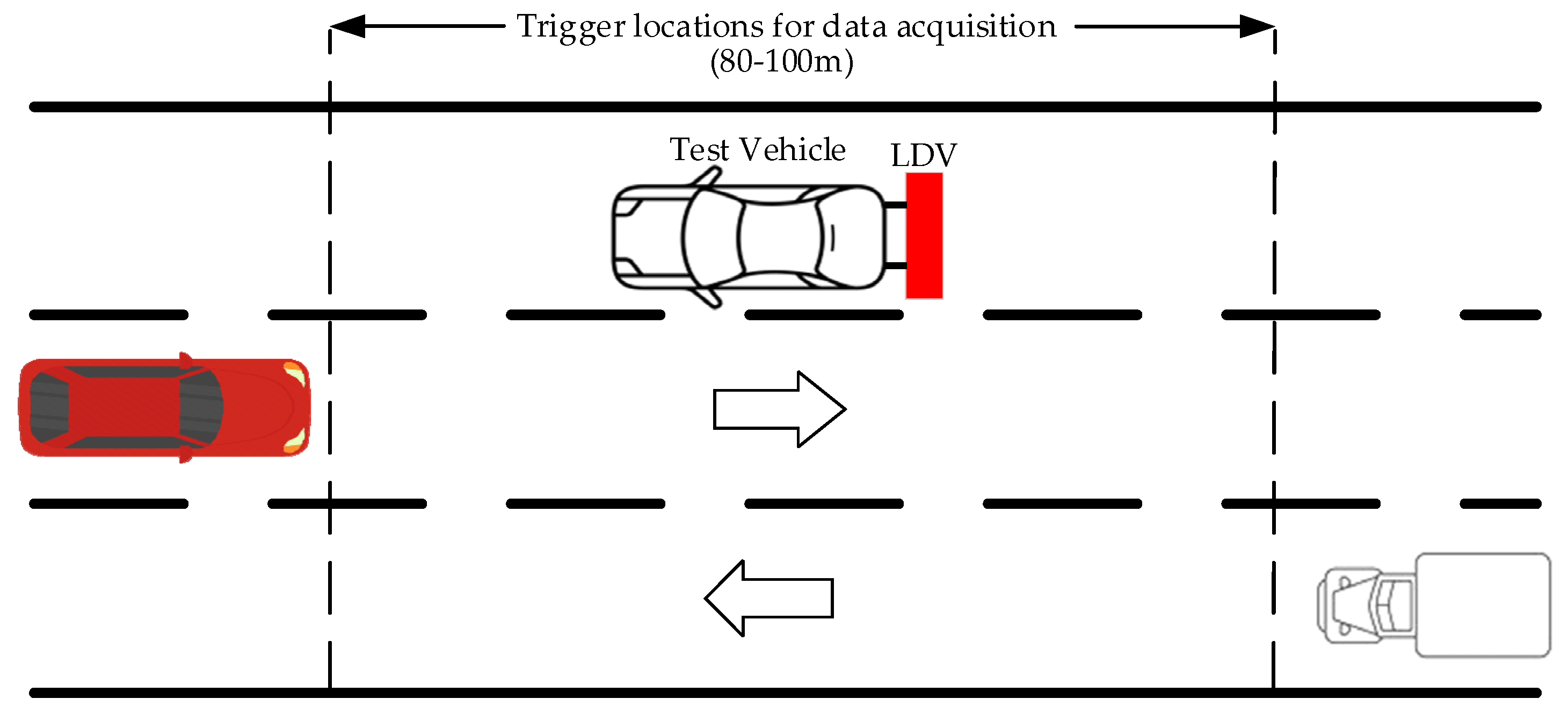

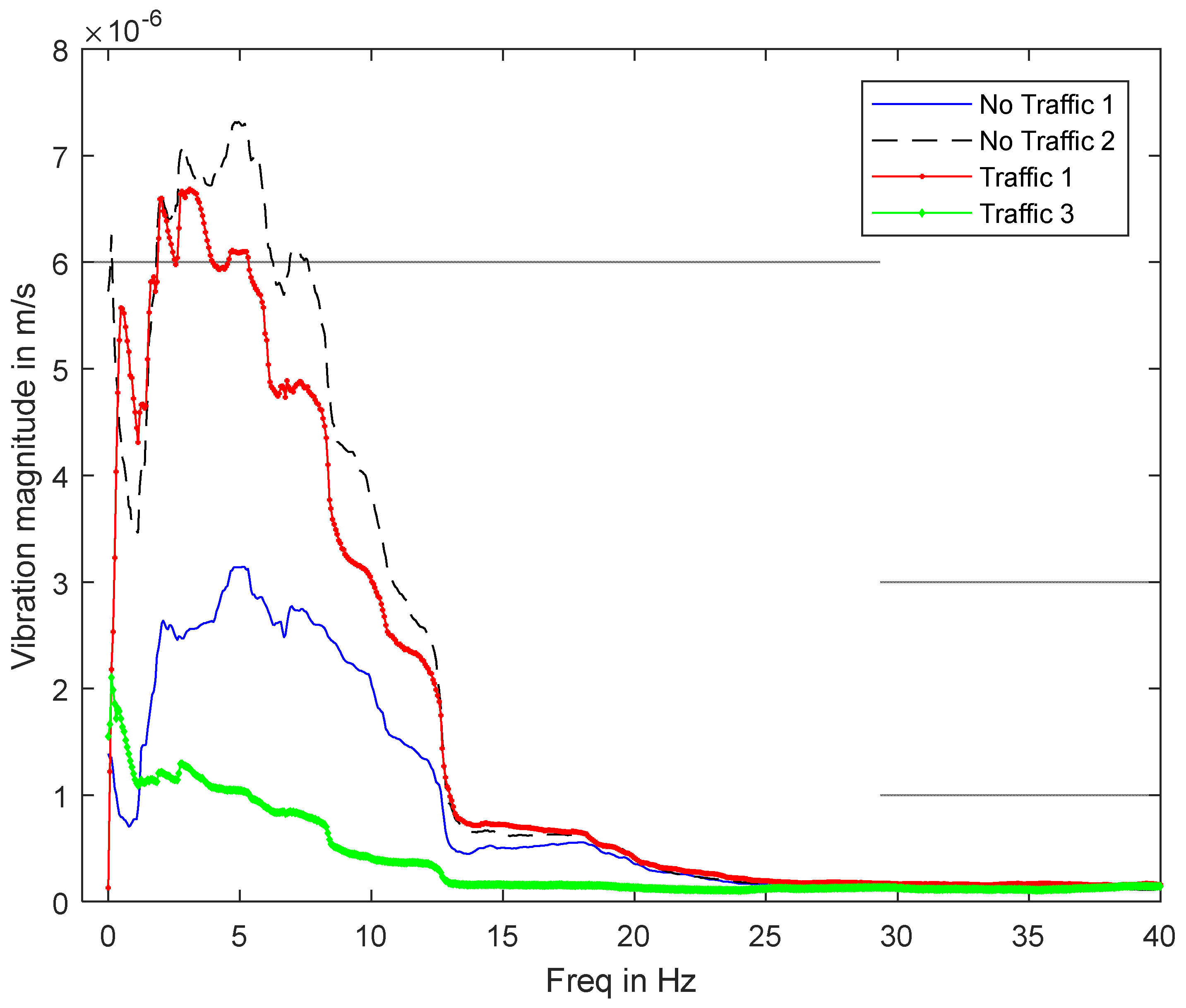

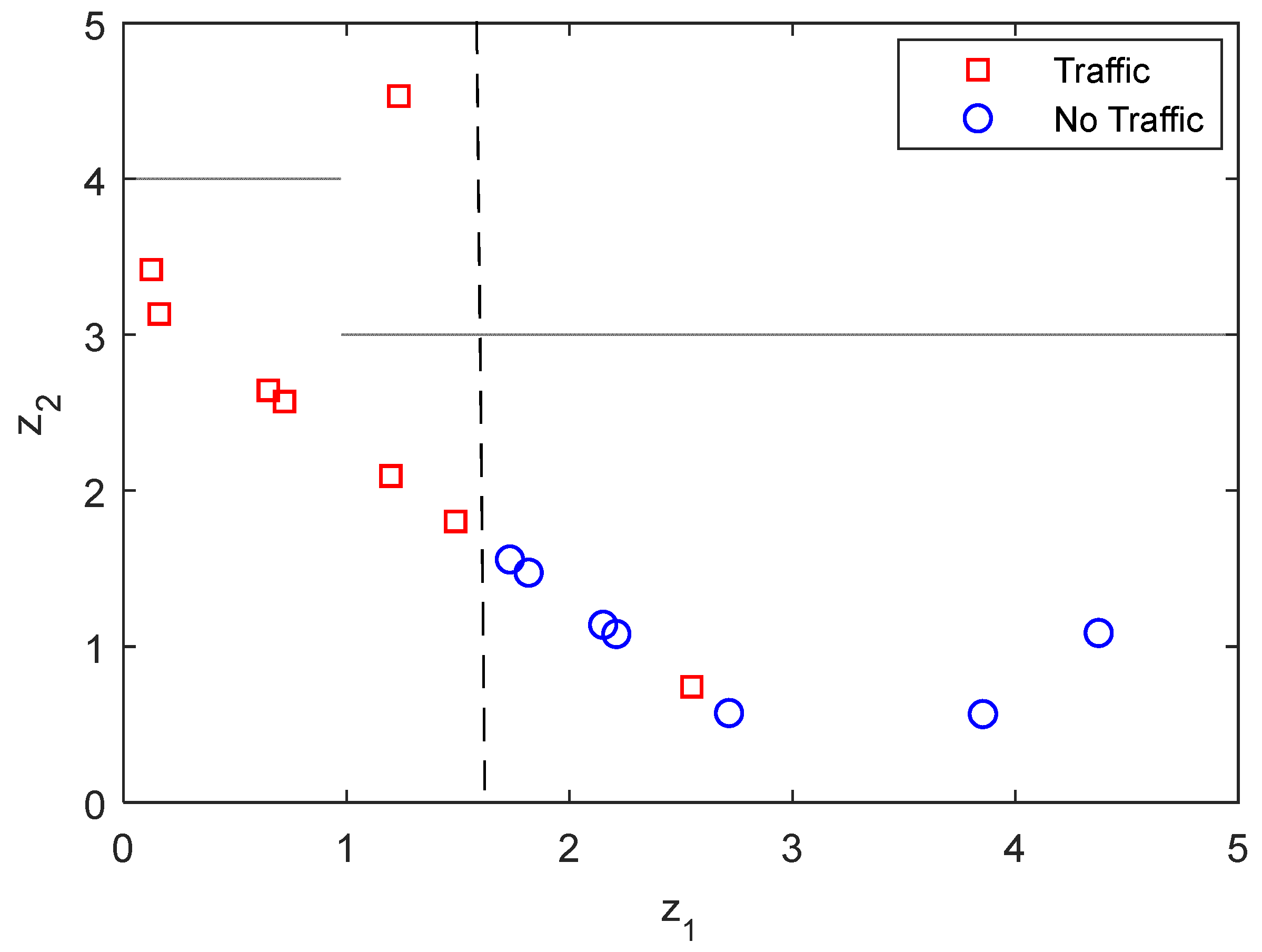
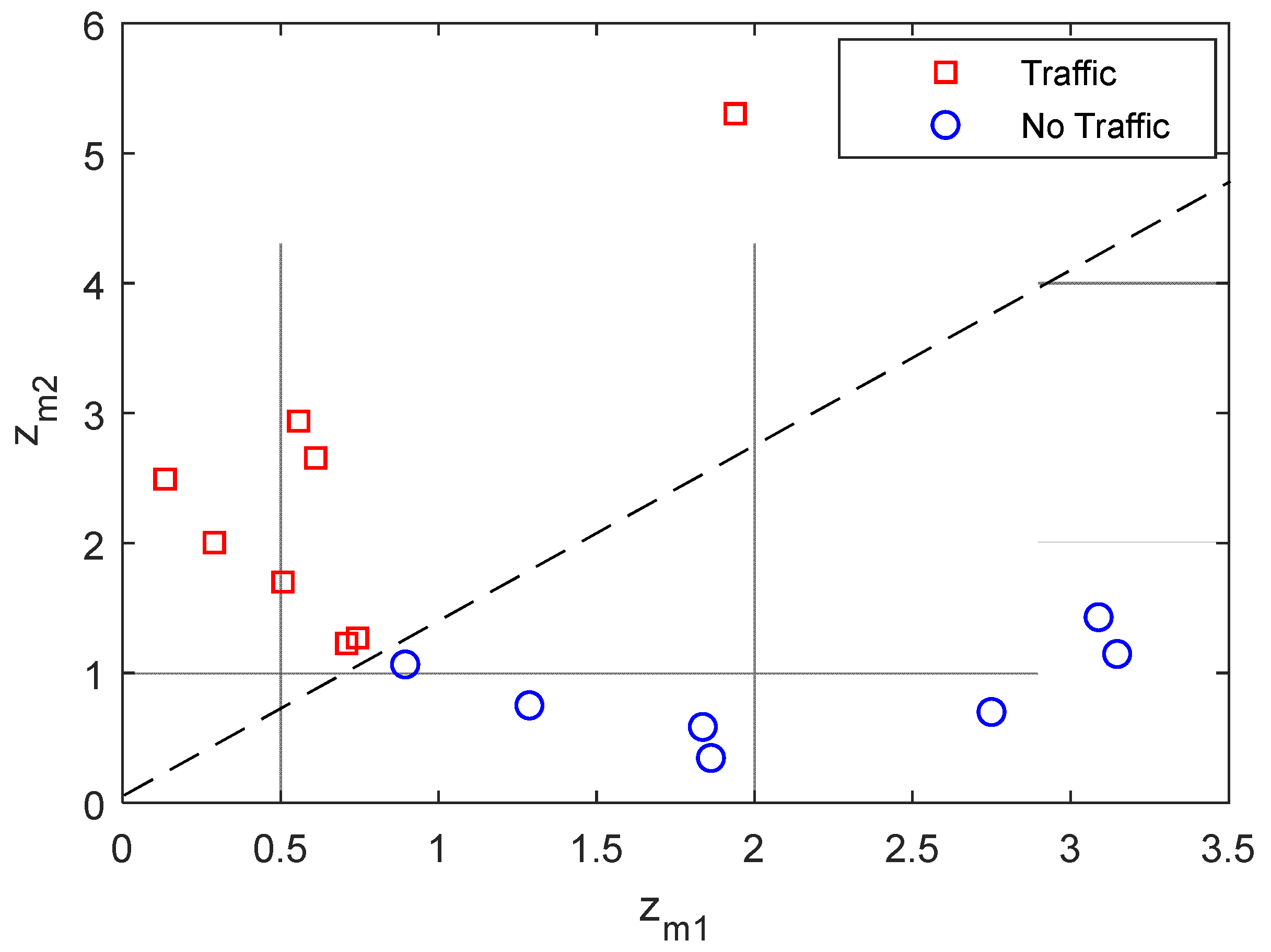
| ID | Vehicle | Maximum (×10−4 m/s) | Minimum (×10−4 m/s) | RMS (×10−4 m/s) | Variance (×10−8) |
|---|---|---|---|---|---|
| Traffic 1 | A medium car | 2.03 | −2.17 | 0.56 | 0.32 |
| Traffic 2 | A medium car | 1.40 | −1.74 | 0.32 | 0.10 |
| Traffic 3 | Two medium cars | 0.45 | −0.29 | 0.10 | 0.01 |
| Traffic 4 | A medium car | 2.94 | −2.51 | 1.04 | 1.09 |
| Traffic 5 | A medium car | 1.34 | −1.72 | 0.42 | 0.18 |
| Traffic 6 | Two medium cars | 6.12 | −5.08 | 1.63 | 2.68 |
| Traffic 7 | A medium car | 1.24 | −1.02 | 0.29 | 0.08 |
| Traffic 8 | A heavy car | 1.65 | −1.81 | 0.40 | 0.16 |
| No traffic 1 | - | 1.36 | −1.11 | 0.27 | 0.07 |
| No traffic 2 | - | 1.62 | −2.11 | 0.60 | 0.36 |
| No traffic 3 | - | 3.27 | −3.99 | 0.90 | 0.81 |
| No traffic 4 | - | 0.52 | −0.31 | 0.10 | 0.01 |
| No traffic 5 | - | 2.02 | −2.08 | 0.71 | 0.50 |
| No traffic 6 | - | 1.28 | −1.30 | 0.36 | 0.13 |
| No traffic 7 | 3.21 | −3.81 | 0.86 | 0.74 |
Publisher’s Note: MDPI stays neutral with regard to jurisdictional claims in published maps and institutional affiliations. |
© 2022 by the authors. Licensee MDPI, Basel, Switzerland. This article is an open access article distributed under the terms and conditions of the Creative Commons Attribution (CC BY) license (https://creativecommons.org/licenses/by/4.0/).
Share and Cite
Ismail, M.A.A.; Schewe, M.; Rembe, C.; Mahmod, M.; Kiehn, M. Traffic-Induced Vibration Monitoring Using Laser Vibrometry: Preliminary Experiments. Remote Sens. 2022, 14, 6034. https://doi.org/10.3390/rs14236034
Ismail MAA, Schewe M, Rembe C, Mahmod M, Kiehn M. Traffic-Induced Vibration Monitoring Using Laser Vibrometry: Preliminary Experiments. Remote Sensing. 2022; 14(23):6034. https://doi.org/10.3390/rs14236034
Chicago/Turabian StyleIsmail, Mohamed A. A., Marvin Schewe, Christian Rembe, Mohamed Mahmod, and Michael Kiehn. 2022. "Traffic-Induced Vibration Monitoring Using Laser Vibrometry: Preliminary Experiments" Remote Sensing 14, no. 23: 6034. https://doi.org/10.3390/rs14236034
APA StyleIsmail, M. A. A., Schewe, M., Rembe, C., Mahmod, M., & Kiehn, M. (2022). Traffic-Induced Vibration Monitoring Using Laser Vibrometry: Preliminary Experiments. Remote Sensing, 14(23), 6034. https://doi.org/10.3390/rs14236034






